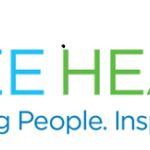 The Paycheck Protection Program (PPP) of the CARES Act authorized loans to small businesses to pay their employees and some of the businesses overhead expenses during the COVID-19 crisis. The loan amounts can be forgiven under Section 1106 of the Act as long as certain conditions are met, and knowing those conditions at the start of the loan process is crucial. I have identified five areas of interest to receive 100% forgiveness.
The Paycheck Protection Program (PPP) of the CARES Act authorized loans to small businesses to pay their employees and some of the businesses overhead expenses during the COVID-19 crisis. The loan amounts can be forgiven under Section 1106 of the Act as long as certain conditions are met, and knowing those conditions at the start of the loan process is crucial. I have identified five areas of interest to receive 100% forgiveness.
1. First is the spending deadline. You have eight-weeks also known as the covered period starting with the date the funds are received. Determining this can be accomplished by counting 55 days starting the day after the funds are deposited into your account. There is an ‘alternative payroll covered period’ where biweekly or weekly payroll schedule borrowers can elect to calculate their eligible payroll costs by using the eight-week period that begins on the first day of their first pay period following the receipt of their funds. This alternative period is for payroll costs ONLY. Payroll costs incurred, but not paid during the last pay period are eligible for forgiveness if paid on or before the next regular payroll date.
Non-payroll costs, which we will cover shortly, must be paid during the eight-week period or incurred during the same period and paid on or before the next regular billing date, even if the billing date is after the covered period. This appears to mean that if your eight-week period ends on June 30th and you receive an electric bill for the month of June, due on July 15th, that payment would count towards forgiveness. It also appears that if you are delinquent in payment for prior months bills, paying them now would count towards forgivable use of the funds.
2. Next we will cover what the proceeds can be used for. The funds can be used for the following:
â First and foremost, it is ‘payroll costs’. This is the gross payroll and the employer share of group health insurance and retirement plan contributions, and the employer portion of state and local payroll taxes. Payments to independent contractors (1099s) do not count as payroll costs, and amounts paid to any individual employee is capped at $100,000 on an annualized basis. This may be calculated as $15,385 based on eight weeks. Qualified leave wages allowed under the Families First Coronavirus Response Act (FFCRA) and benefits for owners (health care expenses, retirement contributions, and employer state taxes) also do not count towards payroll costs.
â Rent payments on leases that were in force before February 15, 2020
â Interest on mortgage and debt obligations, such as an auto loan on a vehicle used for business, that were dated before February 15, 2020
â Utility payments for which services began before February 15, 2020 – Utilities includes Electric, Gas, Water, Transportation Utility Fees, Telephone, and Internet Access
â Refinancing of an SBA Economic Injury Disaster Loan (EIDL) made between January 31, 2020 and April 3, 2020
3. As the benefit is named ‘Paycheck’ protection, it should be expected that the majority of the proceeds must be spent on payroll costs. To not lose any of the forgiveness amount, at least 75% must be spent on these costs. If any more than 25% is spent on non-payroll costs, then that amount is not forgiven.
4. There is a loss of forgiveness if there is a reduction in the rate amount paid to each employee over the eight-week period for any employee. For each employee, compare the wages paid during the eight-week period against the wages during the first quarter 2020. If there was greater than a 25% decrease in annualized wages paid to any employee, take the amount the employee would have received for the eight-week period at 75% of the first quarter 2020 rate less the amount the employee actually received for the eight-week period. For example, if an employee earned $10,000 for the first quarter (an average of $6,153 for eight weeks), and earned $4,000 for the eight-week loan period, that is a 35% decrease. Therefore, $6,153 at 75% is $4,615, less the actual $4,000 paid, and we arrive at the $615 amount that is not forgivable. This does not apply if the reason for the wage reduction is based on hours as that will be covered in the next item.
5. There is a loss of forgiveness if there is a reduction in the number of employees paid over the eight-week loan period. To find the reduction, take the payroll costs and multiply it by the Average Number of Full-Time Equivalent Employees (FTEs) per month for the eight weeks beginning on loan disbursement, and divide it by one of the following two options:
1. The average number of FTEs per month from February 15, 2019 to June 30, 2019, which is suggested for seasonal employers
2. The average number of FTEs per month from January 1, 2020 to February 29, 2020
A simple example is if you had ten employees pre-COVID-19 and five employees post loan, the forgivable amount is 50% of the total loan amount received. The average number of FTEs shall be determined by calculating the average number of employees for each pay period falling within a month.
You have until June 30, 2020 to restore your salary/wage levels (item #4 above) or full-time employment (item #5 above) for any changes made between February 15, 2020 and April 26, 2020.
The SBA has recently published that if you have made a good faith, written offer of rehire, the employee rejects the offer, and the rejection is documented by the borrower, the FTE for that person can be excluded in the restored count. Meaning if you had ten FTEs previously and two rejected the return to work offer, you only need to restore eight FTEs. That separated employee who rejects the offer of re-employment may forfeit eligibility for continued unemployment compensation. You will be required to inform your state’s unemployment office within 30 days of the person’s rejected offer of employment. You can also exclude in your FTE count requirement employees who were terminated for cause or voluntary resignations.
To receive loan forgiveness, you will submit the SBAs Loan Forgiveness Application to your servicing lender. The request will include documents that verify the number of full-time equivalent employees and pay rates, as well as the payments made on other eligible expenses, as identified above. You must certify that the documents are true and that you used the forgiveness amount to keep employees and make eligible payments. The lender must then make a decision on the forgiveness within 60 days per SBA guidance. Hold on to your records as there is a six year audit period.
For amounts not forgiven, the Act states that the interest rate can be no greater than 4% as set by your lender (currently it is 1%), and payments are deferred for the first six months, however, interest will accrue during this period. The loan will be due in two years, and there is no prepayment penalty or fees for earlier payoff.
The SBA may have released new guidance on the forgiveness process, so be sure to check with sba.gov for the latest details. This article is to be used for discussion purposes and you should seek guidance from your tax advisor and the bank that originated the loan.


























